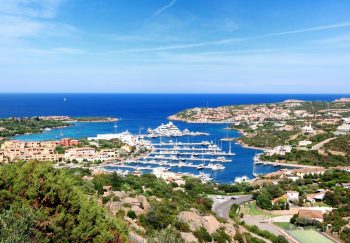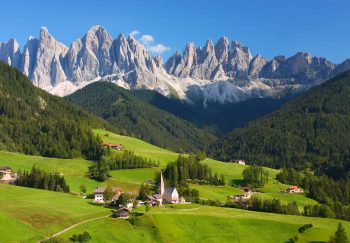The charming city of Siena is one of the most visited day trips from Florence. Siena is a well-respected city that has received all the praise. You can still enjoy a more personal experience in Tuscany by staying the night and seeing the city after day trippers leave.
This is an Italian city you can enjoy walking around, no matter how long it takes. It’s easy to walk around the historic center once you get there. Although it is hilly, the distances are short. This is great news, especially for travelers with limited time. It means that you can easily check off a lot of items on your list.
This doesn’t mean that this list of things you can do in Siena has everything. You can do a lot more than what I have listed, but this list will get you started in your travel planning. As I have done in other articles on “What to do and See”, I also included some unusual attractions. Because they are often less crowded, I enjoy including a few oddities in my sightseeing. As always, your mileage may vary.
My Siena trip planner will help you plan your trip.
The Top Attractions of Siena
- Siena Duomo The striking facade of Siena’s 13th-century cathedral is just a glimpse of the beautiful decorations inside. It’s made of layers upon layers black and white marble. I love the floor tile designs, but the black-and white striped columns along the nave will also amaze you. The black and white are a nod to the colors of two horses that were ridden by the city’s founders.
- Piazza del Campo The main square of the city is not in front the cathedral but the city hall. The Piazza del Campo has a shell-shaped shape, which radiates out from the Palazzo Pubblico at it’s base in nine equal sections. The nine sections represent “The Nine”, who ruled the city state in the Medieval period. The Palio, the famous horse race in Siena is also held at the Campo.
- Palio di Siena The Palio takes place twice a year on July 2nd, and August 16th. The race is a bareback horse race that takes place around the Campo, which has been covered in sand to commemorate the occasion. It involves riders from 10 of the 17 Contrade (neighborhoods). These events draw huge crowds so make sure you book everything, including accommodation and tickets with seats if possible. It is not unusual for horses or riders to be injured, so it may prove difficult to see.
- Torre del Mangia This tower is located on the Palazzo Pubblico. It overlooks the Piazza del Campo. It is 289 feet high and was constructed in the middle of the 14th century. (That’s the exact height of Duomo, yes that was intentional). For a spectacular view, you can climb the steps to the top of the tower.
- Palazzo Pubblico Siena’s city council dates back to the late 13th-century. The rooms are almost completely covered in frescoes. Three panels known as “The Allegory for Good and Bad Governance” are the most well-known. They were created by Ambrogio Lorenzetti. Although the building is still used for Siena’s municipal hall, it is also open to tourists. On the first floor is the Museo Civico, which houses the Civic Museum. Here you will find the Lorenzetti frescoes and many other items.
- Sanctuary of St. Catherine. St. Catherine, Siena’s patron saint, was born in the city of 1347. Although the house where she lived is now a shrine, it still contains the crucifix from whom she received her stigmata.
- Museo dell’Opera del Duomo Many of the historical and valuable items or artifacts that once belonged to the Siena Duomo can now be seen in this museum. The best reason to visit this museum is to see the size of the Duomo. You can only see the structure from above (along with the extra wall built before the plague halted construction).
- Pinacoteca Nazionale This museum exhibits works by Italian painters of the Medieval, Renaissance and Modern eras. It also includes pieces by Lorenzetti (whose art is displayed in the Palazzo Pubblico).
- Piccolomini library – The so-called library can be found inside the Duomo and is well worth the trip to see the incredible ceiling and wall frescoes. Although it was originally designed to house a pope’s private library, it now houses illuminated choir books.
- Baptistery The Duomo’s 14th-century baptismistery is located just beside the Duomo. This is one of the side effects to building a cathedral on top of hills. It is most famous for its beautiful marble baptismal font, carved by Jacopo dilla Quercia. Donatello’s works are also included in the font, as well as Lorenzo Ghiberti’s bronze panels on one the Florence baptistery doors.
Guided Tours in Siena
-
Viator Tours to Siena -
Select Italy Tours from Siena
-
Walks of Italy Tours
You’ll find some of the most bizarre attractions in Siena
- Basilica di San Domenico This large Dominican church dates back to the 13th century. It is quite austere-looking but is a very popular stop for tourists in Siena because of St. Catherine’s head. It was Catherine’s church. But the main attraction is San Domenico’s chapel, which displays the saint’s “incorrupted head” and finger. The rest of her body is buried at Rome. San Domenico is located in the same area as St. Catherine’s former home. It is now a shrine to her.
- Contrada Museums Each Medieval neighborhood (or contrada) has its own museum within their boundaries. Each museum is open to all and includes historic items, including ceremonial garb. There are 17 contrada museums located in Siena. You are not sure which one to visit? The Aquila (Eagle) Museum has the oldest Palio banner intact, dating back to 1719. The museum has a photo of Giuseppe Garibaldi (Italian unification fighter), which was presented to the Lupa (Shewolf) contrada. Many historic costumes are on display at the Torre (Tower), even though it is symbolised by an elephant. Jacopo dellaQuercia, the man behind the marble baptismal fountain in the city’s baptistery, has carved a wooden sculpture at the Drago (Dragon) Museum. You can also find one in your neighborhood – this is a great place to start. (Do not go to museums that aren’t open all the time. Check with the tourist information office first.
- Palazzo Salimbeni – The oldest continuously-operated bank in the world is Monte dei Paschi di Siena, founded in 1472. The Palazzo Salimbeni is the headquarters of the bank. It is a 14-century palace in Siena. The oddity is that you can’t visit the offices of the oldest bank in the world, but there are other reasons to visit. The palace houses the bank’s offices. It also has an art gallery that displays works of Sienese painters from 16-17 centuries. The statue outside the palace is, by the way of Sallustio, an archdeacon as well as an economist.











